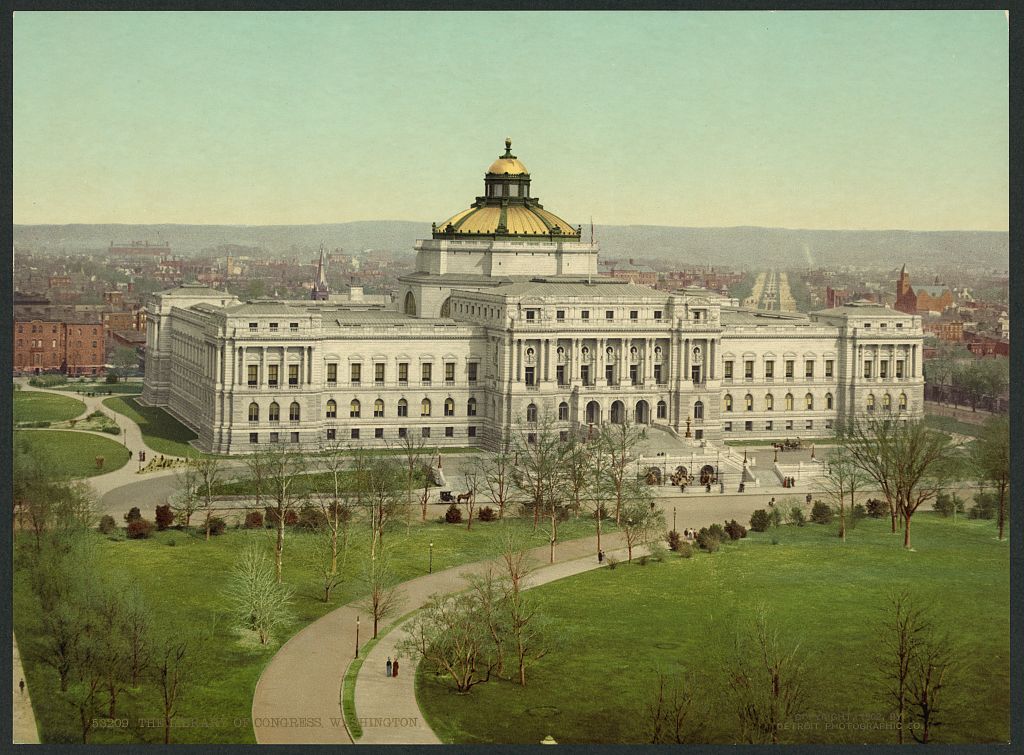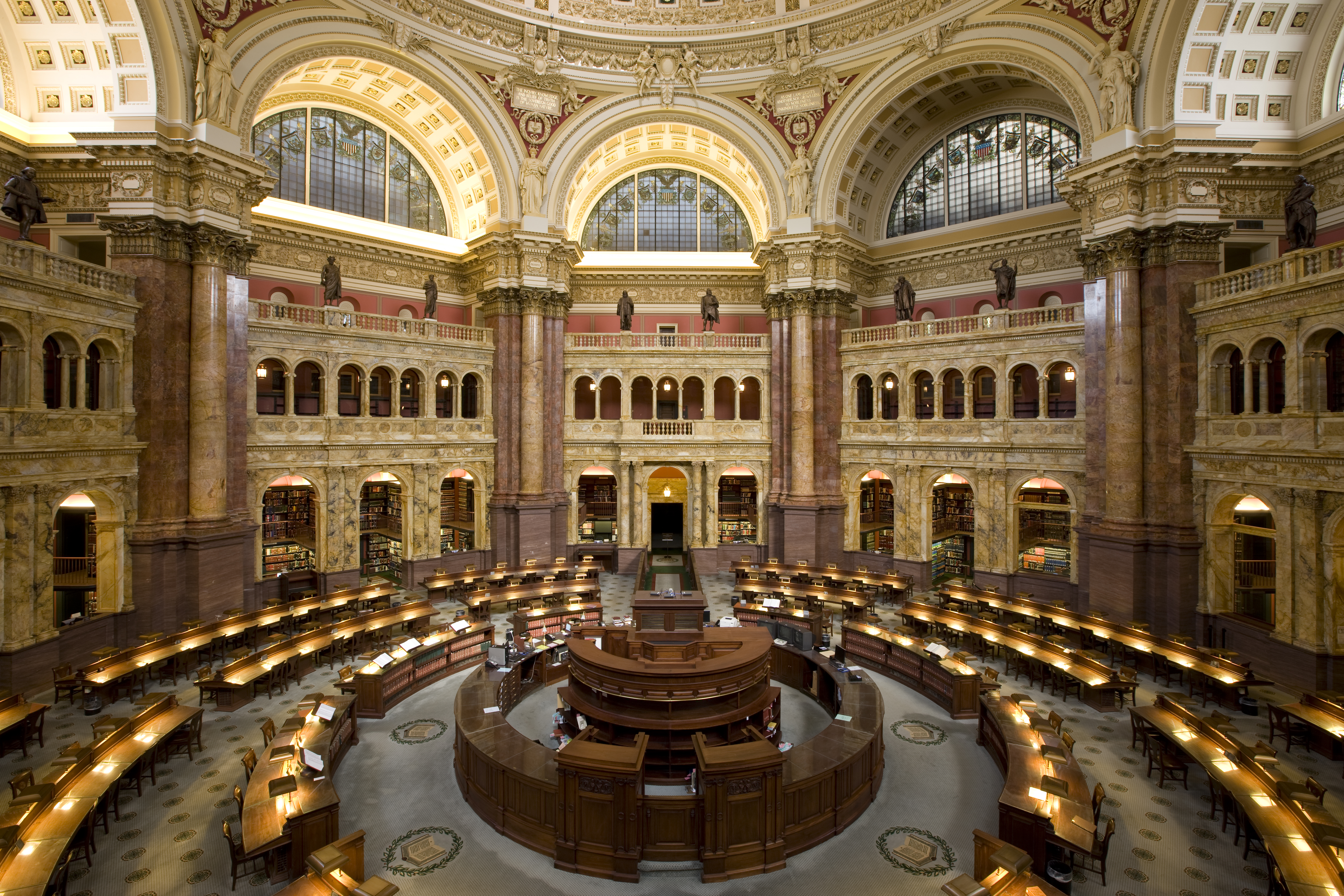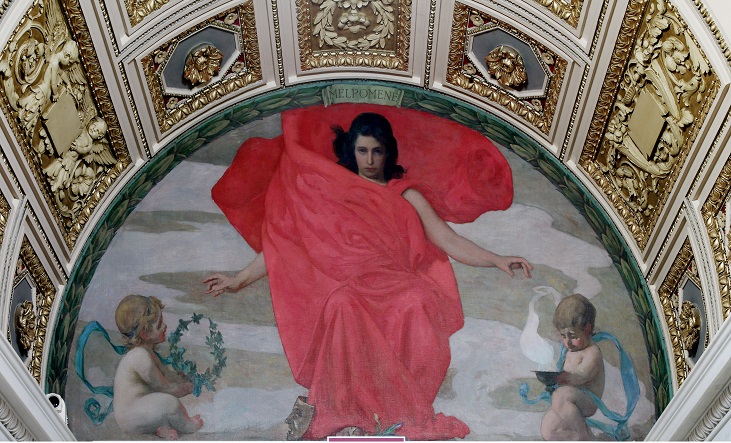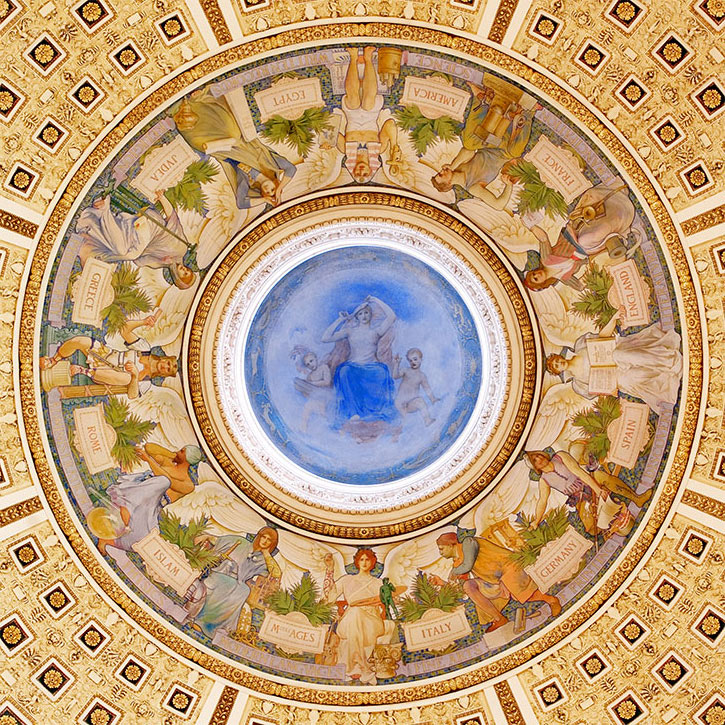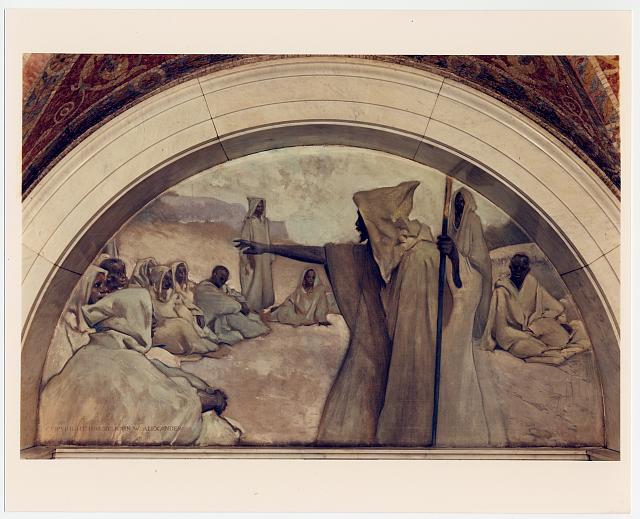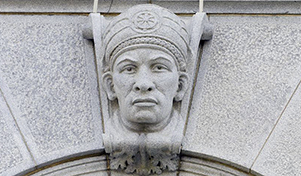Baltimore students have the reputation of showing no interest in visiting D.C., though our experience with students in the Division of Legal, Ethical and Historical Studies contradicts that rumor. Historians and philosophers in the division have accompanied eager students to the Capitol building, the White House, and other spots along the National Mall over the years.
In this post I want to talk about my very favorite building in D.C., the beautiful Library of Congress — specifically, the Jefferson Building, which is the original library.*
Not being a poet, it’s difficult for me to put into words the love, craftsmanship, and vision of beauty that went into the Jefferson Building’s adornment during the 1890s and early 20th century. The painted murals, ceilings, ornamental sculpture, and Neo-Renaissance architectural flourishes give evidence of a time in American history when nothing could be more glamorous, more patriotic, than a people’s library packed with centuries of accumulated knowledge from around the world.
The Main Reading Room
The Muse of Tragedy, Melpomene
I want to bring your attention to a couple of visuals in the Library, which might surprise you. When visiting the Main Reading Room, crane your neck back to look at the paintings on the ceiling of the central dome. The paintings make up a collar mural entitled Evolution of Civilization.
It’s difficult to see in a pixelated reproduction, but what the painter, Edwin Blashfield, did was to paint twelve allegorical figures representing the cultures to which the United States was heir. These figures include Egypt, Greece, Rome, France, England, Germany, and Italy — the ancient and modern powers that you might expect as “predecessors” to the United States. What might cause more surprise for readers staring up from their books, though, is the figure between Rome and the Middle Ages, namely Islam.
The figure — centrally located in the Library — reminds us that the “othering” of Islam from Western Civilization is of recent vintage. Here the artist deliberately included Islam in the cultural “family” of great contributors to human culture, here identified as bearing the gift of “Physics.” (France has the label “Emancipation” and Judea “Religion”).
Lest the visitor think the collar mural figure a fluke, careful study will reveal several spots throughout the Library that pay tribute to Arab, African, Asian, and even Native American learning.
“Oral Tradition” by John W. Alexander (East Mosaic Corridor)
Tibetan Head (one of 33 busts on the exterior of the Jefferson Building)
Something else unavoidable about the Library’s decoration is the fact that the natural sciences and the arts are worshipped equally with loving treatment from the painters and sculptors of the period. Compare here “The Light of Astronomy” with “The Light of Poetry” by Carl Gutherz (b. 1844, d. 1907):
We are reminded of a time in the past when poetry, literature, and drama were exalted no less than the sciences. The industrial techniques of the workplace were placed below those classical liberal arts, at their proper level as means rather than ends. Imagine that.
This reader’s palace belongs to every citizen of the United States. The art is accessible for viewing Monday through Saturday from 8:30am-4:30pm (5pm for researchers), excluding holidays. You must get a free reader’s card in the Madison Building in order to use the Library’s books and materials. The mind-boggling wealth of materials (digital and printed) at the Library of Congress is a topic for another time.
* All images used here are in the public domain or from the Library of Congress Web site.
